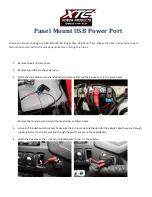
Ethanol
The manufacturer recommends that your ve-
hicle be operated on fuel containing no more
than 10% ethanol. Purchasing your fuel from a
reputable supplier may reduce the risk of ex-
ceeding this 10% limit and/or of receiving fuel
with abnormal properties. It should also be
noted that an increase in fuel consumption
should be expected when using ethanol-
blended fuels, due to the lower energy content
of ethanol. Problems that result from using
methanol/gasoline or E-85 ethanol blends are
not the responsibility of the manufacturer. While
MTBE is an oxygenate made from Methanol, it
does not have the negative effects of Methanol.
CAUTION!
Use of fuel with Ethanol content higher than
10% may result in engine malfunction, start-
ing and operating difficulties, and materials
degradation. These adverse effects could
result in permanent damage to your vehicle.
Clean Air Gasoline
Many gasolines are now being blended to con-
tribute to cleaner air, especially in those areas
where air pollution levels are high. These new
blends provide a cleaner burning fuel and some
are referred to as “reformulated gasoline.”
The manufacturer supports these efforts toward
cleaner air. You can help by using these blends
as they become available.
MMT In Gasoline
MMT is a manganese containing metallic additive
that is blended into some gasoline to increase
octane. Gasoline blended with MMT provides no
performance advantage beyond gasoline of the
same octane number without MMT. Gasoline
blended with MMT reduces spark plug life and
reduces emission system performance in some
vehicles. The manufacturer recommends that
gasoline without MMT be used in your vehicle.
The MMT content of gasoline may not be indi-
cated on the gasoline pump; therefore, you
should ask your gasoline retailer whether or not
his/her gasoline contains MMT.
Materials Added To Fuel
Besides using unleaded gasoline with the
proper octane rating, gasolines that contain
detergents, corrosion and stability additives are
recommended. Using gasolines that have these
additives will help improve fuel economy, re-
duce emissions, and maintain vehicle perfor-
mance.
Indiscriminate use of fuel system cleaning
agents should be avoided. Many of these ma-
terials intended for gum and varnish removal
may contain active solvents or similar ingredi-
ents. These can harm fuel system gasket and
diaphragm materials.
274
Summary of Contents for 2013 Grand Cherokee
Page 1: ...Grand Cherokee O P E R AT I N G I N F O R M AT I O N...
Page 2: ......
Page 3: ......
Page 4: ......
Page 6: ...2...
Page 11: ...7...
Page 66: ...62...
Page 91: ...87...
Page 92: ...88...
Page 93: ...89...
Page 165: ...INSTRUMENT CLUSTER 161...
Page 187: ...Compass Variance Map 183...
Page 218: ...Operating Tips Chart 214...
Page 296: ...292...
Page 372: ...368...
Page 395: ...391...
Page 396: ...392...
Page 397: ...10 INDEX 393...
Page 407: ......
Page 408: ...Chrysler Group LLC 13WK741 126 ENG AB Printed in Europe 13...
















































